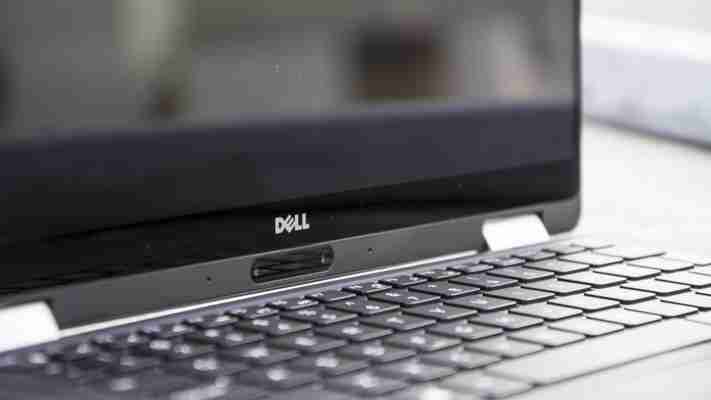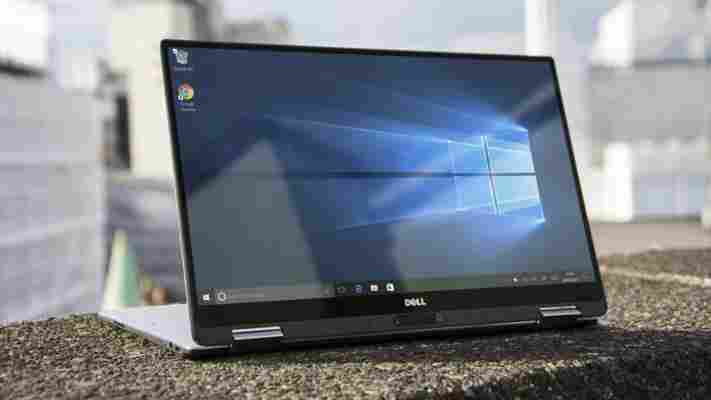Let’s talk hybrids: a weird mishmash of laptop and tablet squeezed into one device. I’ve never been completely sold on the idea. You either want a clamshell laptop for heavy-duty work, or a tablet for on-the-fly use. There’s no middle ground as far as I’m concerned. But the arrival of the super-skinny XPS 13 2-in-1 suggests that Dell thinks otherwise.
This isn’t Dell’s first stab at a hybrid design. A couple of years back it brought us the dire XPS 12 , a system riddled with shortcomings from battery woes to flat-out design faults.
You’ll be pleased to hear that this year’s XPS 13 2-in-1 is a radical departure from that. Dell may even have persuaded me that hybrids do have their place in the laptop market. At least, if they’re as good as this.
Dell XPS 13 2-in-1 review: Price, configurations and competition
The XPS 13 2-in-1 isn’t cheap. The entry-level model - equipped with a Core i5, 4GB of RAM and a 128GB SSD - costs £1,349. Dell’s full-fat XPS 13 starts at £200 less, which makes this a tough sell.

If you’re after the top-end model, with a Core i7, 8GB of RAM, 512GB of SSD storage and a 4K display, expect to fork out a stiff £1,669. For that price, you’d expect the 2-in-1 to blow the regular XPS 13 out of the water. Right?
Dell XPS 13 2-in-1 review: Design
Aside from the chunky hinge, the 2-in-1 looks remarkably similar to the standard XPS 13. The chassis is made of the same aluminium and carbon-fibre combo, although there’s something extra below the screen: a dual-lens Windows Hello camera, which lets you log in using just your face. There’s also a fingerprint reader, should the camera be a little finicky.
The 2-in-1 is thinner than the regular XPS 13 too. In fact, it’s the slimmest XPS ever made, measuring just 13.7mm at its thickest point and tapering down to 8mm at its thinnest. Weighing just 1.24kg, it’s perfect for the commute.

This slimmed-down design does come with a couple of little niggling quirks. For starters, the power button has shifted to the right-hand edge, next to the microSD card reader. I much preferred the large circular power button to the right of the keyboard, as found on other XPS models.


Secondly, as you might have guessed, there aren’t any full-sized USB ports. Instead, you get just two USB-C ports, one on either side. Since one port is needed for charging, it’s a meagre provision. There’s a USB-C to USB3 dongle included in the box, but that’s far from an ideal solution.
Dell XPS 13 2-in-1 review: Display
One area where Dell hasn’t scrimped is the award-winning display. The familiar 13.3in InfinityEdge panel is still here, with its minimal screen bezels and all, and as always it’s a delight to use. No manufacturer does laptop displays quite like this, and it makes the 2-in-1 look great in tablet mode.
The system I tried was fitted with a 1,920 x1,080 panel; the QHD+ version is a tempting upgrade, but it’ll set you back a whopping £1,500. Then again, this entry-level model with 256GB of SSD storage is just £50 cheaper. Don’t expect a bargain here.
In our display tests, the Full HD display covered 85.4% of the sRGB colour gamut, with a contrast ratio of 1,206:1. That’s a smidge below the latest XPS 13 with its 91.9% coverage, but to the naked eye the difference is all but imperceptible.
READ NEXT: Best laptops
The maximum screen brightness of 253cd/m2 is also a notch below the XPS 13’s 289cd/m2 output, but it’s not disastrous. Overall, it’s a beautiful display to gawk at with wonderfully vibrant colours – just don’t try to use it in bright sunlight.
Dell XPS 13 2-in-1 review: Keyboard and touchpad
This section of the review is usually where the negatives come flooding in. Too often, the keyboard and touchpad on a hybrid system feel like an afterthought. I’m pleased to say that’s not the case here.
In fact, the keyboard is unchanged from the regular XPS 13. The keys are nicely spaced, and there’s just the right amount of movement and feedback with each keystroke. Backlighting still comes as standard, with adjustable brightness levels.
The touchpad is well-sized too. Windows 10 multi-touch gestures worked without any slip-ups, and it’s easy to jump between applications with relative ease. I wasn’t even tempted to plug in a USB mouse while working in more demanding applications – it’s that good. If I had to criticise, I’d note only that it does seem to pick up greasy fingerprints a little too easily.
Dell XPS 13 2-in-1 review: Performance and battery life
Our review unit featured a dual-core Kaby Lake Intel Core i7-7Y75 processor, partnered with 8GB of LPDDR3 RAM. This is one of Intel’s new low-powered chips, designed with a focus on energy efficiency and thermal management. It doesn’t even need a cooling fan: this hybrid runs dead silent.
Unsurprisingly, this placed the 2-in-1 towards the lower end of our performance hierarchy, with an overall 4K benchmark score of 31. That’s some way behind the non-hybrid XPS 13, with its full-power Core i5, which attained a far stronger overall score of 50.
Regardless, the 2-in-1 is perfectly powerful enough for the usual desktop and browser-based applications, such as Word and Google Docs. Just don’t expect it to whizz through anything particularly processor-heavy. Oh, and with an Intel HD Graphics 615 chip on board, you’d be best just sticking to Minecraft when it comes to games.
In theory, the low-powered chip should at least deliver a battery-life benefit: the XPS 13 2-in-1 lasted 7hrs and 54mins in our continuous video playback test, so it should more or less deliver a full day’s conservative use. The regular Dell XPS 13 was just eight minutes behind, though, so the difference is negligible.
Dell XPS 13 2-in-1 review: Verdict
Dell has evidently learned from criticism of its last XPS hybrid. While performance is on the lightweight side, the XPS 13 2-in-1 is a joy to use, shining a light on the potential of the hybrid design. It’s a well-balanced device for however you want to use it. It even won over this previously sceptical reviewer.
The issue, as so often, is the price. When you can pick up an entry-level XPS 13 with a full fat Kaby Lake Core i5 for £1,149, it’s hard to justify paying an extra £200 for a bit of added versatility.
Still, within its market there’s nothing out there to challenge the XPS 13 2-in-1. If you’re tempted by the hybrid idea, and you have the disposable income, Dell’s XPS 13 2-in-1 is without a doubt your best buy.
| Core specs | |
|---|---|
| Processor | Dual-core 1.3GHz Intel Core i7-7Y75 |
| RAM | 8GB |
| Memory slots (free) | 1 (0) |
| Max memory | 8GB |
| Dimensions | 13.7 x 304 x 199 |
| Weight | 1.24Kg |
| Sound | Realtek HD Audio (3.5mm headset port) |
| Pointing device | Touchpad, touchscreen |
| Display | |
| Screen size | 13.3 |
| Screen resolution | 1,920 x 1,080 |
| Touchscreen | Yes |
| Graphics adaptor | Intel HD Graphics 615 |
| Graphics outputs | 2x USB-C |
| Graphics memory | 1GB |
| Storage | |
| Total storage | 256GB SSD |
| Optical drive type | N/A |
| Ports and expansion | |
| USB ports | 2x USB-C |
| Bluetooth | 4.2 |
| Networking | 802.11ac wireless |
| Memory card reader | microSD |
| Other ports | N/A |
